Gayle Irwin's Blog, page 25
October 20, 2016
Allergic to Dogs? You May Still be Able to Adopt!
 Although all dogs shed, some breeds are better for people with allergies than others. Here’s a short list of dogs which may be better suited for allergy-suffers:
Although all dogs shed, some breeds are better for people with allergies than others. Here’s a short list of dogs which may be better suited for allergy-suffers:Bichon Frise – these soft, curly-coated dogs are considered hypoallergenic, which means this dog causes fewer allergic reactions than other breeds. Bichons are known to have sweet dispositions and to make good family pets.Poodles – this breed comes in three sizes: toy, miniature, and standard. They are smart and easily trainable; however, they do require regular grooming.Italian Greyhounds – small with a short coat, these dogs are known to be loyal; they do require regular exercise due to their instinct and heritage for running and hunting.Portuguese Water Dogs – these large canines are known to be docile and intelligent, making them excellent family pets.Maltese – another of the smaller breeds, this lively yet gentle dog is noted for its intelligence and devotion; a Maltese requires regular grooming.Schnauzer – like the poodle, schnauzers come in three sizes; these active terriers require exercise and may be territorial, but they are also obedient and loyal.
Find more dog breeds that may be good for people with allergies at http://www.akc.org/about/faq-allergies/.
It’s estimated that 10 percent of Americans are allergic to dogs. But, that doesn’t mean if you’re part of that population that you can’t have a dog. Consider adopting one of these hypoallergenic breeds during the month of October, which is National Adopt-a-Shelter-Dog Month. Find your new furry friend through Petfinder: www.petfinder.com.

Published on October 20, 2016 15:58
October 18, 2016
6 Keys to Successfully Adopting and Living with a Pet
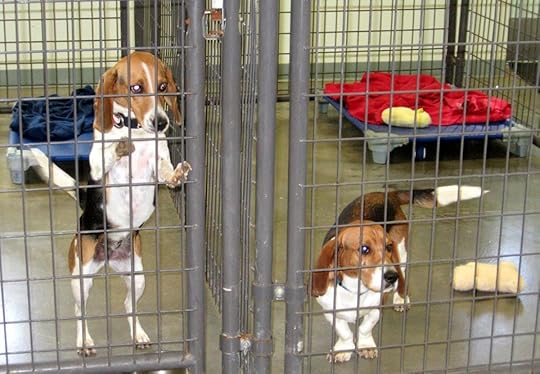 Most of us know that warm, fuzzy feeling of seeing a puppy or kitten at play. Pet lovers all recognize that tug at our heartstrings when we visit a Humane Society or animal shelter and see the many animals looking at us sadly through the cages. We also know the quiver of our lip when we look on the Internet, view the photos, and read the stories of the numerous pets needing new homes, looking to be placed by the hundreds of pet rescue organizations. Many of us, in turn, respond by adopting a pet or two.
Most of us know that warm, fuzzy feeling of seeing a puppy or kitten at play. Pet lovers all recognize that tug at our heartstrings when we visit a Humane Society or animal shelter and see the many animals looking at us sadly through the cages. We also know the quiver of our lip when we look on the Internet, view the photos, and read the stories of the numerous pets needing new homes, looking to be placed by the hundreds of pet rescue organizations. Many of us, in turn, respond by adopting a pet or two.There is little else that lifts one’s spirits than to come home from a tough day at work or school and be happily greeted by a four-footed friend. If you are thinking of adding a pet to your home, seriously consider adoption – more than four million animals every year go into shelters and rescues.
October is National Adopt-a-Shelter-Dog Month, a great time to add a furry friend to your household. Here are six tips to help insure you and your new pet will spend many wonderful years together:
Don’t adopt on a whim - seriously think about this important decision. Consider your lifestyle to help ensure the type of pet best fits your home situationNever give a pet as a gift. Your lifestyle may be different from the person you’re thinking of gifting with a living creature, and that person may not even want a pet. If you’re thinking of adopting a pet for your child remember that you as the adult parent will likely be the one taking care of the pet – if you’re okay with it, then adopt a pet as a FAMILY, not as a gift to your child.Research! Various breeds of dogs, for example, have different personalities and needs; research the many breeds to help find the best fit for your family. Cats also come in a variety of breeds and personalities; maybe one suits your lifestyle better than another. Consider your finances and be prepared for medical expenses. Pets require annual medical care, and, like people, animals can develop medical issues due to genetics or accidents. For example, most cats are litterbox-trained at a young age, but later in life they can develop kidney failure and may not use the box as regularly. You might consider acquiring pet insurance, but that too costs money. Remember: nothing is free, not even a “free pet!”Think about the future. Are planning to have a baby in the next few years? Do you think you might be moving soon? The number one reason people give for relinquishing a pet to an animal shelter is “I’m moving.” If you are a person who would move without your pet or who would consider giving up your pet because of having a baby, it would be best for you to wait and adopt after you’re more settled.Train your pet. Puppies often need to be housebroken, and all dogs need to know the basic commands of sit, stay, come, and no. No pet is perfect, just as no human is perfect. You may want to work with a professional trainer or take your dog to obedience classes -- or train the animal yourself. Training helps insure your pet’s safety and also helps the two of bond more closely. And remember: train lovingly, not harshly! Adopting a pet is a wonderful experience, and having a pet makes a home more cozy, warm, and loving. Pets love us unconditionally, and, like children, they depend on us for care. Follow the above-mentioned tips and you and your pet will share a happier, healthier life together.
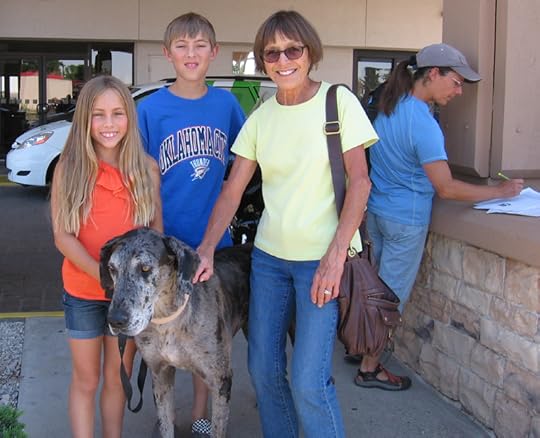
Published on October 18, 2016 06:51
October 13, 2016
Lessons from An Old Dog
 I’ve enjoyed the companionship of dogs throughout my life. Most have lived to at least ten, some to be twelve, and Cody, our cocker spaniel who passed in January, was more than seventeen. Cody was deaf and couldn’t see very well during those final months, but one thing he possessed, nearly to the end, was spirit. He was loyal to his people and to his animal friends. That’s a great lesson to learn from an old dog: loyalty.
I’ve enjoyed the companionship of dogs throughout my life. Most have lived to at least ten, some to be twelve, and Cody, our cocker spaniel who passed in January, was more than seventeen. Cody was deaf and couldn’t see very well during those final months, but one thing he possessed, nearly to the end, was spirit. He was loyal to his people and to his animal friends. That’s a great lesson to learn from an old dog: loyalty.Sage, the sweet, blind springer spaniel my husband and I adopted in 2001, shared our home and hearts for more than 11 years, living to be 12 ½ years of age. She endured several eye surgeries prior to becoming completely blind due to Progressive Retinal Atrophy (PRA). Yet, through it all, she showcased courage and perseverance. Her entire life reflected those traits, as well as kindness, friendship, and compassion.
There’s a lot we can learn from an old dog. Here are a few things:Don’t expend energy on trivial things – it’s a waste of time and effort.Keep the “baddies” at bay – make noise at the negative to chase it away.Love and appreciate your friends and family.Be careful what you stick your nose into – some stuff isn’t good for you.Take walks, even short ones – breathe the fresh air, smell the blooming flowers, take notice of the animals around you, and smile at the sunshine! Oh, and run in the rain (if you can – otherwise, just stand in it for a few moments and enjoy the cleanliness of a refreshing shower!)Rest – it’s as needed for your health as much as walking.Travel when you can – there’s so much to experience, even in one’s older age.Use all your senses – one day you may not be able to hear or to see, so soak everything up in every way possible (smell and touch are great ways to “observe” and “learn” just as is hearing and sight).Enjoy the blessings of today – there may not be a tomorrow.
October is National Adopt-a-Shelter-Dog Month, and November bring National Adopt-a-Senior-Pet Month. Bring those two together and in October consider adding a senior dog to your household. Just as we can learn from the wisdom of older people, we can also learn from elderly animals – if only we’d open our hearts to what these wonderful creatures can teach us.
There is a wonderful story from last year about a man who adopted an eight-week-old puppy and kept the dog all of his life. Then, as the dog’s quality of life dwindled, the man didn’t abandon the old dog or stick it in a shelter, as many people do; instead, the man took his dog on a trip of a lifetime, like having “a bucket list,” visiting places he wanted to share with his dog. Read the wonderful, heart-warming story and see the moving photos at http://abcnews.go.com/Lifestyle/york-man-takes-dying-dog-bucket-list-adventure/story?id=31338158
Another such heart-warming pet-human adventure story came this past summer: http://www.cnn.com/2016/07/13/health/dog-last-trip-trnd/
These stories showcases devotion, love, compassion, and joy. May we find beauty in life around us, in nature, in people, in ourselves, and in our companion animals – no matter what their age.
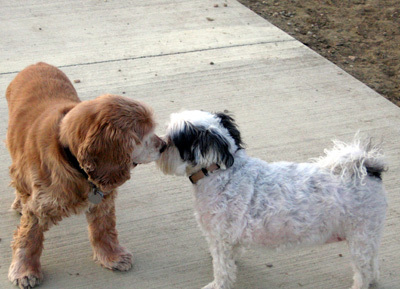
Published on October 13, 2016 05:37
October 9, 2016
Celebrate Dogs in October!
 They come in all sizes, shapes, and colors. From big to little, from extra-tiny to extra-large, dog breeds are as variable as the human race. Red, white, blue, black, brown, tawny, spotted, solid; short-hair, long-hair, no-hair. Outgoing and friendly, shy and reserved, protective, loving. A hunter, a herder, a comfort, service-oriented. Sniffing, drooling, laughing, quiet, boisterous. There is a type of dog for every type of person.
They come in all sizes, shapes, and colors. From big to little, from extra-tiny to extra-large, dog breeds are as variable as the human race. Red, white, blue, black, brown, tawny, spotted, solid; short-hair, long-hair, no-hair. Outgoing and friendly, shy and reserved, protective, loving. A hunter, a herder, a comfort, service-oriented. Sniffing, drooling, laughing, quiet, boisterous. There is a type of dog for every type of person.Dogs have been part of humankind’s existence for eons. And yet, millions need homes each and every year.
October is National Adopt-a-Shelter-Dog Month, a time to celebrate the joy of canine companionship and promote the adoption of these wonderful creatures. The ASPCA estimates nearly eight million dogs and cats enter shelters across the United States annually; about three million are killed. Sadly, only about 35 percent of animals that are available for adoption actually get new homes, meaning millions are killed because not enough people adopt.
In addition to the humane societies and animal shelters, there are rescue groups, many of which are voluntarily-run, that take in dogs (and cats) in an effort to re-home them. From coast-to-coast, these tireless individuals run these organizations with one focus: to save and adopt-out pets. Some are breed-specific; many of these are noted by the American Kennel Club (AKC). Others are type-specific, such as herding dogs or large dogs (see the websites for HERD of Wyoming and Big Dogs Huge Paws). Others accept whatever dog needs rescuing. To find a shelter or rescue group near you, visit Petfinder.com. Or, if you’re interested in a breed-specific rescue, visit the AKC website: http://www.akc.org/dog-breeds/rescue-network/contacts/
When you adopt, especially from a kill-shelter, you are saving a life. In fact, you’re likely saving two lives: the one you adopt and the one coming into the shelter after it. Wherever you adopt, shelter (kill or not) or rescue, you are helping more than one dog, for when you adopt, room in that facility or foster home is made for another animal in need.
Dogs that go into a rescue or shelter aren’t bad; they are likely being given up due to a move (the #1 reason people give up their animals), health of the person (an elderly individual going into a nursing home cannot take their beloved pet with them), or other life change, such as job loss. If behavior is the cause, the owner likely did not provide his/her dog with obedience training. Simple commands such as “sit,” “stay,” “heel,” “come,” and “no” alleviate a lot of behavior issues – but a dog can’t teach those things to himself; owners need to be responsible for the training of their pets. Classes are often held through AKC clubs, big-box pet stores, such as PetCo and PetSmart, or one can hire a trainer (or research how to train a dog themselves – just remember, positive reinforcement is the best way to train a dog).
Pets improve people’s lives. Research shows people with pets are happier and healthier. Dogs make us exercise; even walks around the block help both humans and their canine friends be healthier. The simple act of petting a dog decreases blood pressure, reduces stress, and calms us down as well as uplifts our moods. Many dogs enjoy riding in the car, going for walks, jogs, and hikes, and simply being a part of a family; therefore, they make wonderful companions!
So, consider adopting a dog this month. Whether you are single, married, have children (or not), or are retired, there’s a dog to fit every lifestyle. Of course, you need to find the RIGHT dog -- that’s one of the roles of animal shelters, rescue organizations, and humane societies. The staff and volunteers who spend time with the animals know their personalities and may often know the dog’s background, therefore, they offer a tremendous service for those hoping to add a dog to their life. But, do your research as well. You know your lifestyle – learn about the breeds and discover what type of dog best fits your family life and energy level. Visit this website to learn about the different dog breeds: http://www.akc.org/dog-breeds/
Be a hero – save a life today by adopting the right dog for you!
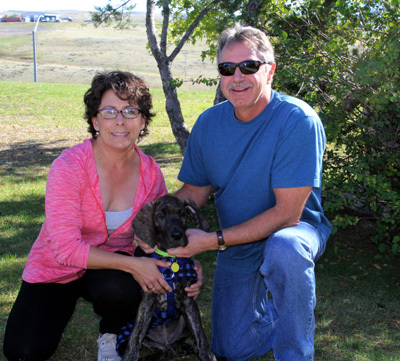
Published on October 09, 2016 19:43
September 30, 2016
Pet Adoption - Be Prepared for the Responsibility
 October is National Adopt-a-Shelter-Dog Month, a prime opportunity to visit your local humane society, animal shelter, or pet rescue organization. But, before you jump into the realm of dog (or cat, or any pet) adoption, consider the responsibility of caring for a pet.
October is National Adopt-a-Shelter-Dog Month, a prime opportunity to visit your local humane society, animal shelter, or pet rescue organization. But, before you jump into the realm of dog (or cat, or any pet) adoption, consider the responsibility of caring for a pet.Likely you've seen the TV ads: sorrowful eyes staring out from cages. You've heard the plea: help shelter pets. You may have even heard the longing in your child's voice: “Can we PLEASE get a dog?!” All pluck at your heart like a harp string, making you seriously consider adding a dog to your household.
But, you have questions – good for you! Your pondering shows responsibility, and that’s crucial of a dog owner. What else? Well, here are some things to consider:
Responsible Adoption
NEVER get a dog on impulse! God gave humans dominion, but we are to take care of His creatures in a responsible, caring way. A dog is a life that will be your responsibility. Don’t be a statistic and don’t let your dog be one either. More than seven million dogs come into shelters annually, and of those, nearly three million are killed because not enough people adopt shelter dogs (about 20 percent of dog owners adopt) and only about 25 percent of stray dogs are reclaimed. Adoption often saves a dog's life.
For some people the breed is vital. Not all shelter dogs are “mutts” – nearly 25 percent are purebred. Therefore, if having a setter or sheltie ranks high for your family, begin looking at your local shelter. Additionally, nearly every dog breed has a rescue organization associated with it. For information on purebred dog rescues, visit http://www.akc.org/breeds/rescue.cfm.
Just because it's in rescue or shelter doesn't mean there's something wrong with the dog; many are turned in because an owner loses a house or dies, therefore, the animal is relinquished. Locate a shelter or rescue near you at http://www.petfinder.com/.
Understand Dog Breeds
Research the breeds and choose a dog that fits your lifestyle. For example, if you live in an urban apartment, getting a border collie is not the most wise decision. These dogs are energetic, need room to run, and are herders. If you have small children at home, choosing a breed that is known to be affectionate with kids, such as golden retrievers or beagles, would be better than adding a Chow Chow or chihuahua. Learn about dog breeds at http://www.akc.org/dog-breeds/.
Like people, dogs are individuals and, depending upon the background and former family, one that, in general, is considered good with kids may not be if that particular dog hasn't been around children. Therefore, brush up on the dog breeds in general and also learn as much as you can about the the dog you're considering. The shelter/rescue staff will provide you with as much information as they can – don't be afraid to ask questions.
Puppy or Not?
Puppy, middle-aged, senior … what age is best? That again depends upon your lifestyle. Can you handle all the training, including housebreaking, a puppy needs? Do you have the time and patience to deal with chewing, whining, and other challenges a puppy poses? Baby dogs are similar to baby humans – they require time, attention, and training.
Teenaged dogs, adult dogs, and senior dogs all offer benefits: (1) they generally are the size they will be and (2) they may already be housebroken. However, teenaged dogs tend to be hyper and get into trouble (like many teen kids), but if you're patient, willing to train, and can put up with some shenanigans occasionally, that age may work for you.
Consider adults and seniors. Adult dogs are more calm than teenagers or puppies, and senior-aged and smaller breeds don't require much exercise. Therefore, if you're not very active or not home a lot, if you don't have a large yard or a community dog park nearby, then an older, less lively breed might be more suitable. Also, by adopting an older dog, you are likely saving its life – senior dogs are less likely to find homes, yet their devotion is just as strong as, sometimes stronger than youngsters because they have already known family life.
Training
Obedience training is a primary key, no matter the age or breed. Basic commands like “sit,” “stay,” “come,” and “no” help bring calm from chaos and also help keep your dog safer. There are many training options, from doing it yourself to hiring a professional. Community kennel clubs, PetCo and PetSmart stores, and some rescues and shelters offer obedience classes. Check what's available in your community and make the time to take this critical step with your dog.
Images of wagging tails, drooling mouths, and lapping tongues conjure up smiles. Adding a dog to one's home can and should be a blessing, but there are important steps to take beforehand. Do your homework, understand your lifestyle, and be committed to caring for a dog for its lifetime Doing these things will keep you, your family, and your new furry friend happy for a lifetime! Take some time in October to consider adopting a new friend during National Adopt-a-Shelter-Dog Month.
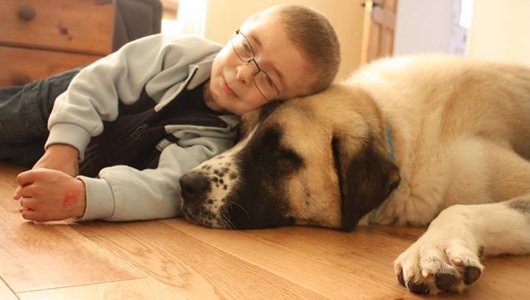
Published on September 30, 2016 15:31
September 20, 2016
Autumn Trips with Pets: Enjoying Nature's Splendor
 The official start to autumn occurs in just a few days. This is one of my most favorite times of the year: the changing color of tree leaves, the crisp morning air, the cool reflections on waterways, and the intense hues of sunrises and sunsets…. all teaming together to create a magical season.
The official start to autumn occurs in just a few days. This is one of my most favorite times of the year: the changing color of tree leaves, the crisp morning air, the cool reflections on waterways, and the intense hues of sunrises and sunsets…. all teaming together to create a magical season.Autumn can be a time of fun travel, especially to enjoy nature. In the west, where I live, the majestic elk put on a show with displays of sights and sounds. Bugles and bellows echo across canyons and forests as males vie for the affections of females. Rocky Mountain and Yellowstone national parks reverberated with this eons-old mating ritual, bringing people from across the world to witness the performances. Recently, my family and I trekked to Rocky Mountain National Park in Colorado for the festive colors of the plant-life and majestic matches of the animal-life. We’ve taken similar trips to Yellowstone. Each experience is memorable, especially when including our pets.
Estes Park, the community gateway to Rocky Mountain National Park, is very dog-friendly. From accommodations and eating establishments to gift shops and walking paths, one will find “Dogs Welcome Here” signs posted. Many a person I encountered browsing shops along the town’s main streets had dog on leash. Estes also has a dog park where Fido can run and play, unrestrained by a leash.
According to an article published earlier this year by the Chicago Tribune, nearly 40 percent of travelers bring their pets along for the journey, up significantly during the past decade. Therefore, communities such as Estes Park which embrace travelers and their furry friends, will likely receive a many-bones rating for its hospitality.
Sunset Magazine recently listed some top dog-friendly destinations in the West, including several communities in Washington, Oregon, and California.
Although pets are restricted in America’s national parks, this year being the centennial anniversary of the National Park Service would be a wonderful opportunity to enjoy these unique, beautiful places – in particular, during this special season of autumn. So, why not plan a journey to witness the striking autumn colors in New England or Great Smokey National Park or listen to the bugling elk in Rocky Mountain, Yellowstone, or Teton national parks? Hop on websites such as BringFido.com or GoPetFriendly.com to find lodging, restaurants, and activities that welcome pets.
Find your national park this season. Or visit another natural area during this incredible autumn. And don’t forget your best four-footed friend, who is now welcome in more places than ever!

Published on September 20, 2016 12:45
August 31, 2016
Arthritis in Pets
 Many people experience arthritis as they age. Pets may as well. My husband and I recently learned our 11-year-old cat Bailey has severe arthritis in her hips and spine. We were shocked. She showed no signs of distress. We had taken her to the vet concerned about possible diabetes due to weight gain and other issues. Her blood work came back normal so the vet did X-rays, which revealed something we weren’t expecting: osteoarthritis. Bailey is now on a regiment of specialty food with fish oil and glucosamine and injections of Adequan, which helps the joint fluid slow the damage and maintain the cartilage she possesses.
Many people experience arthritis as they age. Pets may as well. My husband and I recently learned our 11-year-old cat Bailey has severe arthritis in her hips and spine. We were shocked. She showed no signs of distress. We had taken her to the vet concerned about possible diabetes due to weight gain and other issues. Her blood work came back normal so the vet did X-rays, which revealed something we weren’t expecting: osteoarthritis. Bailey is now on a regiment of specialty food with fish oil and glucosamine and injections of Adequan, which helps the joint fluid slow the damage and maintain the cartilage she possesses.Arthritis is a degenerative joint disease in which the cartilage within the joint is worn away. This leads to inflammation, pain, and decreased quality of life. How do pets become arthritic? Some believe genetics. Bailey comes from feral parents, so we know nothing about them. Injury or trauma can lead to the degenerative disease and obesity can contribute to worsening the condition. Reduced mobility and activity as well as reduced frequency in grooming are some of the signs of arthritis. Additionally, occasional lameness or stiffness of gait may be noticed in a cat or dog experiencing the condition.
Arthritis in dogs is more well-known and studied. Until recently, the condition in cats was not commonly diagnosed or treated. Cats tend to hide signs of pain, and therefore, like us, many kitty caregivers don’t recognize or consider this disease in their furry friends. X-rays, like those provided by our vet, helps diagnose arthritis in a cat or dog, but in particular with a cat that tolerates a great deal of pain, like Bailey.
According to the website CatsWithArthritis.com, three in ten cats suffer from arthritis and only seven percent are treated for the condition. Older cats are more prone to the disease. Some studies show as many as 90% of cats 12 and older have arthritis.
Although one may be tempted to give over the counter anti-inflammatory medication to pets, DON’T! especially to cats: aspirin and acetaminophen can be deadly. Your vet can prescribe the right type of drugs to help your kitty. If you have a dog with arthritis, before giving it any human medication, consult your vet as to what dogs can tolerate without causing major harm or death.
There are many great websites about arthritis in pets, including the following:
http://icatcare.org/advice/cat-health/arthritis-and-degenerative-joint-disease-cats
http://catswitharthritis.com/
http://cheyennewest.com/medical-management-of-arthritis-in-cats/
http://www.petmd.com/dog/conditions/musculoskeletal/c_multi_arthritis_osteoarthritis
http://pets.webmd.com/dogs/guide/dog-joint-health-pain-osteoarthritis-and-other-joint-problems
However, the best advice on diagnosis and treatment will come from your veterinarian. Radiographs are becoming more common as a baseline health exam for pets. Now that I’m the owner of three senior pets, I recognize the advantage of doing such work, as well as blood tests, when my animals are younger. This recent diagnosis for Bailey came as a great shock, and though my husband and I are taking positive steps to help her and keep her as comfortable as possible, I wish we’d known this was coming by having the x-rays done a few years ago. Most animals are considered seniors when they’re 10; we would have been wise to have done x-rays before that age. We have Bailey’s sister, too; we recently had radiographs done on her, and learned she, too, has arthritis, just not as badly. As a precaution, Murphy will also be fed the same prescription food and receive the injections.
Education is key to helping our furry companions; sadly, sometimes that edification comes with unexpected news.

Published on August 31, 2016 19:29
August 14, 2016
It Takes a Digital Village: Reuniting Pets and People in the Electronic Age
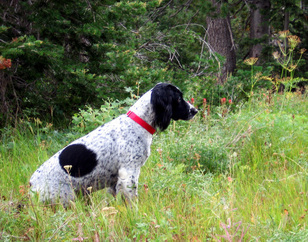 When our blind dog Sage became lost in a Wyoming forest in 2003, my husband and I called on friends and family as well as strangers to help locate her. At that time, even cell phones were fairly new and there wasn’t much cell service in the area where she became lost. We went door-to-door and campground-to-campground throughout the timbered landscape, talking with people and hanging up posters. Although my husband had a cell phone, it did little good camping in the backwoods, so our posters and our face-to-face meetings provided a house phone number of a friend living in town. Because people came to our aid, we were able to bring our lost girl home and, thankfully, safe and sound.
When our blind dog Sage became lost in a Wyoming forest in 2003, my husband and I called on friends and family as well as strangers to help locate her. At that time, even cell phones were fairly new and there wasn’t much cell service in the area where she became lost. We went door-to-door and campground-to-campground throughout the timbered landscape, talking with people and hanging up posters. Although my husband had a cell phone, it did little good camping in the backwoods, so our posters and our face-to-face meetings provided a house phone number of a friend living in town. Because people came to our aid, we were able to bring our lost girl home and, thankfully, safe and sound.Not everyone who loses a pet, particularly in the woods, is so fortunate. But now, 13 years later, there are many additional avenues by which a lost pet can return home safely, and that includes digital and other electronic means.
Facebook is a great way to enlist the help of a community when a pet goes missing. In my community of Casper, Wyoming, there are at least three Facebook pages for lost and found pets: Casper Pets LostNFound (https://www.facebook.com/groups/417171321683716/), Casper/Wyoming Missing Canines (https://www.facebook.com/wyomissingcanine/?fref=ts) and Wyoming Missing Canines (https://www.facebook.com/groups/wymissingK9s/) Administrators of these pages help spread the word about dogs, cats, even birds that are lost or those strays which have been found, and people who visit these sites are also very good about sharing when an animal has gone missing or one is found by a Good Samaritan. Numerous pets have been reunited with their worried owners because of these digital villages of caring people.
Microchipping a pet also has its positive advantages. HomeAgain is the company we have used (https://public.homeagain.com/) but there are others. At times I receive an email notifying about a lost pet in our community with a HomeAgain chip. Pet owners need to be responsible and keep the chip up-to-date with their latest address and phone number and renew the chip when the time comes. It does the Casper animal sheltering organizations no good to receive a lost pet with a microchip with outdated contact information or a chip that is no longer registered.
A fairly new technology are apps for SmartPhones that can help track pets, including ones made by Garmin and Tractive. Using satellite and GPS, lost pets can be found more readily using such an application. Check out a review of the various products at http://pet-tracking-devices-review.toptenreviews.com to learn more about this technology and see if it might be helpful for you and your pet as well as learn about the various products available.
Because we have property in a forested area with little to no cell phone service, the satellite GPS doesn’t do us much good. But, my husband learned of a product that doesn’t rely on cell phones; instead, the Marco Polo is similar to a tracking device used by wildlife biologists to locate wildlife species being researched. A tracking component attaches to the pet’s collar and a wand device then picks up the signal, letting an owner know if the pet is close by or far away (see http://eurekaproducts.com/). Because Mary, our springer/cocker mix, is like Sage in that she gets on a scent of a squirrel or deer and could disappear in a heartbeat, we keep the device on Mary’s collar when we’re visiting our cabin site and when we travel out of town.
In addition to traditional identification tags, some of these systems can come in handy to help pets and their owners reunite. From Facebook communities and Good Samaritans to tracking devices and microchips, it can take a village to bring a lost pet home. Thankfully, there are still concerned and caring people who help reunite animals with their owners.
Published on August 14, 2016 21:10
August 1, 2016
Have an Evac-Pack for Your Pet? Things to Consider Before a Natural Disaster
 August has arrived. We are still in the heat of summer when storms and wildfires explode in an instant. Floods, fires, tornadoes – all can spell disaster for people and pets. During Hurricane Katrina many pet owners stayed behind because Red Cross shelters don’t allow animals, and when people stayed, both humans and animals died. Although some organizations have since helped communities more actively prepare for handling pets during a natural disaster (see the American Kennel Club Reunite Mobile Trailer Disaster Program at http://www.akcreunite.org/relief/), pet owners should also prepare by creating an Evac-Pack.
August has arrived. We are still in the heat of summer when storms and wildfires explode in an instant. Floods, fires, tornadoes – all can spell disaster for people and pets. During Hurricane Katrina many pet owners stayed behind because Red Cross shelters don’t allow animals, and when people stayed, both humans and animals died. Although some organizations have since helped communities more actively prepare for handling pets during a natural disaster (see the American Kennel Club Reunite Mobile Trailer Disaster Program at http://www.akcreunite.org/relief/), pet owners should also prepare by creating an Evac-Pack.An Evac-Pack is like a go-bag for your pet, helping you as a pet owner be prepared to care for your pet during a natural disaster. According to the American Society for the Prevention of Cruelty to Animals (ASPCA), here are things pet parents should include in their pet’s Evac-Pack:Pet first-aid kit (ask your vet what to include but some suggestions are: gauze pads and rolls, antiseptic, hydrogen peroxide, ice pack, petroleum jelly, scissors, and non-latex gloves)3-7 days’ worth of canned (pop-top) or dry foodDisposable litter trays for catsLitter or paper towelingLiquid dish soap and disinfectantDisposable garbage bags for clean-upPet feeding dishes and water bowlsExtra collar or harness and an extra leashPhotocopies and/or USB of medical records and a waterproof container with a two-week supply of any medicine your pet requires (food and medications should be rotated out of your emergency kit every few months otherwise they may go bad or become useless)At least seven days’ worth of bottled water for each person and pet (store in a cool, dry place and replace every two months)A traveling bag, crate, or sturdy carrier, ideally one for each petFlashlightBlanketRecent photos of your pets (in case you are separated and need to make “Lost” posters)Especially for cats: Pillowcase, toys, scoop-able litterEspecially for dogs: Extra leash, toys and chew toys, a week’s worth of cage liner
The ASPCA has a mobile app that can be helpful, showing pet owners what to do in case of a natural disaster/emergency. The app also allows pet parents to store vital medical records and provides information on making life-saving decisions during natural disasters. This free app can help pet owners in several other ways such as:Accessing critical advice on what to do with a pet before, during, and after a major storm—even if there’s no data connectivity.Receiving a personalized missing pet recovery kit, including step-by-step instructions on how to search for a lost animal in a variety of circumstances.Building a lost pet digital flyer that can be shared instantly on social media channels.
Learn more about preparing for a natural disaster if you have pets, including special considerations for livestock, birds, and reptiles, at http://www.aspca.org/pet-care/general-pet-care/disaster-preparedness. Other helpful websites include: http://www.humanesociety.org/issues/animal_rescue/tips/pet_disaster_preparedness_kit.html?credit=web_id354243830, http://www.humanesociety.org/animals/resources/tips/pet_first_aid_kit.html and http://www.redcross.org/images/MEDIA_CustomProductCatalog/m3640126_PetSafety.pdf.
Remember that Red Cross shelters don’t allow pets (they do allow service animals); therefore, plan ahead where your pet will stay if you have to be away from your home for an extended period of time. Pet-friendly hotels, boarding and veterinary clinics, and sometimes local animal shelters and pet rescue organizations can be helpful.
Plan ahead before an emergency strikes with where to go and what to take – you and your pet will ride the wave of a natural disaster better for that preparation.

Published on August 01, 2016 09:28
July 18, 2016
Agility Good for Dogs and Owners
 Imagine a dog or any of its wild canine cousins weaving through trees in a forest, jumping over logs and rocks, and ambling through piles of brush in pursuit of a rabbit for dinner. These are the same type of activities that dogs who participate in agility undertake.
Imagine a dog or any of its wild canine cousins weaving through trees in a forest, jumping over logs and rocks, and ambling through piles of brush in pursuit of a rabbit for dinner. These are the same type of activities that dogs who participate in agility undertake.As Casper gears up for the annual AKC Central Wyoming Kennel Club Dog Show the end of this month, I wanted to take a look at agility competitions and what they mean to dogs, their owners, and the show spectators.
Benefits of Agility
There are several benefits for a dog and its owner to participate in agility. First, agility fulfills a dog's natural instincts. As mentioned above, wild canines traverse obstacles such as trees, logs, rocks, and brush in pursuit of prey. They also do these things to avoid being prey. Therefore, agility courses set up with weave poles, tunnels, jumps, and other obstacles offer a dog the opportunity to mimic the natural type of scenarios it would experience in the wild. Secondly, agility provides great exercise for a dog … as well as its owner. Running through the course, weaving in and out of poles as well as through tunnels and upon seesaws provides a great cardiovascular workout for a dog; the owner/handler runs alongside providing the commands needed to complete the course – that running gives the handler a great workout as well! Additionally, the interaction between dog and owner during the course-running creates a deeper, stronger bond between the two. An agility dog relies on the verbal and hand signals of the handler, and as the two work in tandem to complete the course, their dependence upon each other during the competition instills a deeper dog-owner bond.
Best Breeds for Agility
All dog breeds are welcome in agility competition. Even though all breeds are welcome, certain dog breeds do best in agility. Those are the working breeds, the ones with energy and who are most genetically-gifted in running with purpose. Border Collies, Australian Shepherds, Jack Russell (now called Parson Russell) Terriers, Pembroke Welsh Corgis, and Shetland Sheepdogs perform well in agility competitions. According to the AKC, the most popular dog breeds in agility these days are Shetland Sheepdogs, Border Collies, Golden Retrievers, Labrador Retrievers, Welsh Corgis, and Papillons.
Certain breeds may not perform as well in agility due to their personalities or their body composition. For example, Dachshunds have very short legs and may not jump hurdles very well; pugs with their flattened noses may experience breathing problems from running the course; and giant breeds, such as St. Bernards, may not navigate the course very rapidly, particularly weave poles.
AKC events allow varying jump heights, adjusting to the type of dog competing. The classes are divided by those jump heights to make the competition more fair between the different dog sizes. The dogs run the same course, though, with adjustments in expected time and jump height.
Dogs between the ages of one and eight seem to do the best in agility. Young dogs and puppies can be trained, however, AKC competition rules state a dog must be at least a year old to compete in agility events. Dogs trained in basic obedience perform the best because they follow their owners' commands and instructions. A person can start basic obedience with puppies and young dogs and work up to agility training in the backyard or with a local group in preparation for agility competition when the dog is closer to one year of age, and therefore, allowed to compete in an AKC-sanctioned agility event.
History of Agility
Dog agility began in England in 1978 when the Crufts Dog Show featured a jump-style course as entertainment between competitions. Dog agility came to America during the 1980s. The first AKC event was held in 1994. According to the organization, agility is one the fastest-growing dog sports in America and the fastest growing event in the organization. In the first year of AKC agility trails there were 23 competitions; in 2003 there were 1,379 and in 2007 the number increased to 2,014.
Dog agility is a sport recognized around the world. A world agility championship is held annually as is the Agility European Open and the AKC's National Agility Championship. Learn more at http://images.akc.org/pdf/Dog_Shows.pdf.
Catch a Show, Casper!
The Central Wyoming Kennel Club Dog Show is scheduled at the Fairgrounds in Casper July 29 – 31, and the AKC Agility Trials for Central Wyoming begin in September. Stop by and cheer on your favorite breed! Learn more at http://www.centralwyomingkennelclub.org/events.html and https://www.apps.akc.org/apps/club_search/index_master.cfm?action=refresh_index&active_tab_row_A=1&active_tab_col_A=2&Fixed_ID=2.
Published on July 18, 2016 18:42



